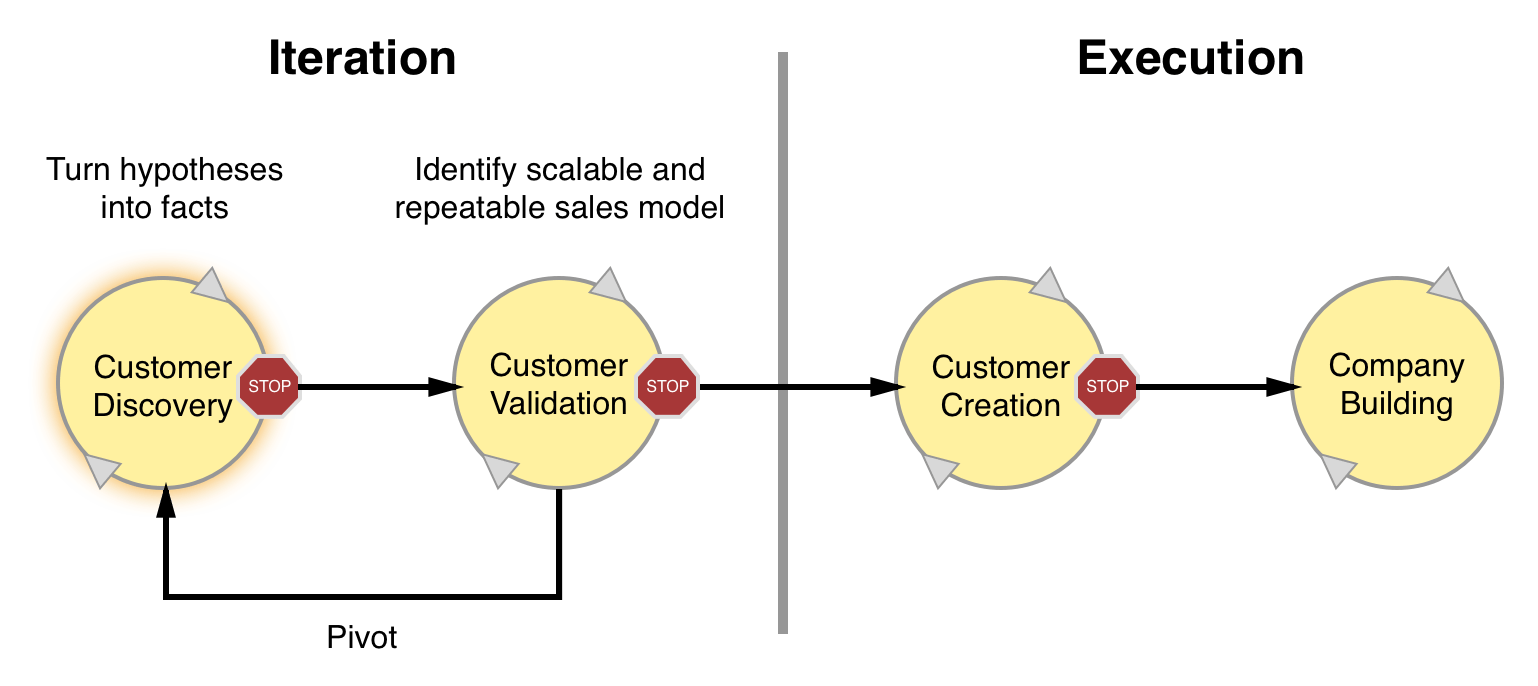How to conduct a customer interview

I previously blogged about and summarized the Lean Startup methodology and requesting customer interviews. But what do you do once you’re in an interview? In this article I will discuss what to do and what to ask in order to get the most insights out of an interview session, as well as what sorts of things you should probe for.

Key goals and principles
During a customer interview we want to achieve two things, ordered by importance:
- Understanding the problem context.
-
Understanding how the customer’s (work) life looks like, so that you can build customer personas.
- This involves understanding the customer’s problems. This is not the same as understanding the problem context! You want to understand how the problems in your problem context fit in the context of all problems that a customer has.
Focus on making the customer talk. Minimize the amount of time that you talk. You don’t want to seed the customer with your idea of the problem or the solution.
Customers don’t always know what to talk about, so sometimes you need to help them out a bit by giving them inspiration or by asking them questions. Inspirations and questions should be as vague and open ended as possible. The goal is not to confirm an idea of yours but to invite discussion.
Step 1: Understanding the problem context
Basic script
CustomerDevLabs suggests the following generic interview script:
- What is the hardest part about [problem context]?
- Can you tell me about the last time that happened?
- Why was that hard?
- What, if anything, have you done to solve that problem?
- What don’t you love about the solutions you’ve tried?
Customer Development Labs notes that filling in the blank for question 1 is the hardest part. You don’t want to too specific because then you’ll be focused too much on your own hypothesized problem. But you also don’t want to be overly broad because that makes discussing hard.
Give a problem presentation
The Startup Owner’s Manual suggests that one could give a problem presentation if the customer has trouble with talking about problems. A problem presentation is a simple 3-slide presentation that lists:
- The top 5 problems related to the problem context.
- The top 5 current solutions related to the aforementioned problems.
- The top 5 newly proposed solutions related to the aforementioned problems.
This presentation should be kept short and simple. Pause after slide 1 and ask customers what they think the problems are and their ranking. Here are example questions you could ask:
- We think these are the five top problems facing the industry. How would you rank them as they affect your company?
- If you have three major problems to solve (in this area) in the year ahead, what are they and why do they make the “top three”?
Again, the goal is to invite discussion, not to talk or to pitch, so keep your own talking short.
Quantify pains
The Startup Owner’s Manual also suggests that you ask this in order to quantify the pain:
- How much does this problem cost you (in terms of lost revenue, lost customers, lost time, frustration, etc.)?
And maybe you could also ask this if you deem it necessary:
- How much do you rate the problems and the pains on a five-point scale?
Step 2: Understanding the customer
Now that you’ve learned more about the problem context, strive to understand the customer’s work life, their other problems, and the context in which they work.
-
Understanding their role (detached from the problem context):
- Let’s step out of [problem context] for a while. What are your biggest pain points in how you work?
- If you could wave a magic wand and change anything about what you do, what would it be?
-
Understanding the organizational context:
- What other people do you work with?
- Are the problems we mentioned limited to just you, or do others in the company have this problem as well?
- What other products do you use?
- How does your company evaluate new products? (price? performance? features?)
-
Understanding relationships:
- Who do you see as potential competitors? Who else are innovators in this space?
- Where do you get information about new solutions? Both for your role specifically as well as related to [problem context]?
- Which channels or people (magazines, websites, social media, influencers, etc.) do you regularly interact with in order to get news?
Miscellaneous tips
-
You could pitch a hypothetical product concept (no features, just concepts) and see how they react.
- How much time would they spend on it?
- How mission critical is it?
- Would it solve the problem?
- What are the barriers to adoption?
-
There is no need to ask all questions in this article! Some customers know more about a specific area than others.
Closing questions
Before closing the interview, you should ask these:
- Who are three other smart people like you I should talk to?
- What is it that I should have asked you?
Saying “smart people like you” may sound to slimey to non-Americans, so adjust your questions according to your audience.
Resources
- 5 Steps to Identify, Segment and Contact our Customers – Lean B2B
- The Achilles Heel of Customer Development
- How to Interview your Customers – Customer Development Labs
